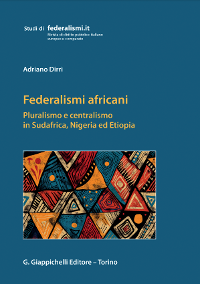
FOCUS - Africa N. 3 - 20/02/2015
The question of the language in an ongoing federal arrangement: the protection of linguistic rights in Tanzania
Alike the experience of most postcolonial countries, Tanzania results of a myriad of different ethnic, linguistic and religious groups: more than 120 ethnic groups can be listed, encompassing indigenous groups, mainly Bantu, and other populations that migrated to Tanzania in various waves, especially to the coastal areas (for instance, the traditional Arab presence in Zanzibar). This ethnic complexity is also reflected on the linguistic side: over one hundred languages are spoken in the country, although Swahili and English emerge as the two official languages, the former for primary education and the socio-political arena, the latter for secondary education and legal matters. As far as religion is concerned, according to the 1967 census (the last one categorising religious beliefs), followers of local (animist) beliefs represented 37% of the population; Christians were 32% and Muslims accounted for 30% of the total, mainly concentrated on the Indian Ocean coast. The peculiarity of Tanzania, in addition to the already complex ethnic situation, with the presence of numerous minorities in the country, resides in the choice for a federation after the independence. At the beginning of the 1960s, two countries arose from the territory which is now called Tanzania: Tanganyika (a former German colony until 1919, then under British rule from 1919 until 1961) and Zanzibar, a British protectorate from 1890 (year of the Heligoland-Zanzibar Treaty between Britain and the German Empire) to
NUMERO 3 - ALTRI ARTICOLI
-
ITALIA - DOTTRINA
Interventi al Seminario sul riordino territoriale organizzato da federalismi, tenutosi a Roma il 4 febbraio 2015
ITALIA - DOCUMENTAZIONEOsservatorio parlamentare sulla riforma costituzionale (12-18 febbraio)
-
ITALIA - DOTTRINA
Il controllo parlamentare sui Governi degli Stati membri dell'Unione europea, tra trasparenza e privacy
ITALIA - DOTTRINALa Banca Centrale Europea motore dell'unificazione politica
-
Execution time: 111 ms - Your address is 216.73.216.237



 Registrati
Registrati Login
Login
 Territorio e istituzioni
Territorio e istituzioni Africa
Africa Osservatorio di Diritto sanitario
Osservatorio di Diritto sanitario Osservatorio sul diritto elettorale
Osservatorio sul diritto elettorale Human Rights
Human Rights Storico focus
Storico focus Riforme istituzionali e forma di governo
Riforme istituzionali e forma di governo Lavoro Persona Tecnologia
Lavoro Persona Tecnologia America Latina
America Latina Osservatorio Trasparenza
Osservatorio Trasparenza Scarica il Documento integrale
Scarica il Documento integrale
 STUDI FEDERALISMI
STUDI FEDERALISMI





23/12/2024
12/08/2024
15/12/2023
21/07/2023
14/12/2022
05/08/2022
15/12/2021
15/09/2021
28/04/2021
25/11/2020
15/07/2020
29/04/2020
11/12/2019
10/07/2019
10/04/2019
19/12/2018
11/07/2018
21/03/2018
20/11/2017
21/07/2017
20/02/2015
14/07/2014
14/03/2014
05/07/2013